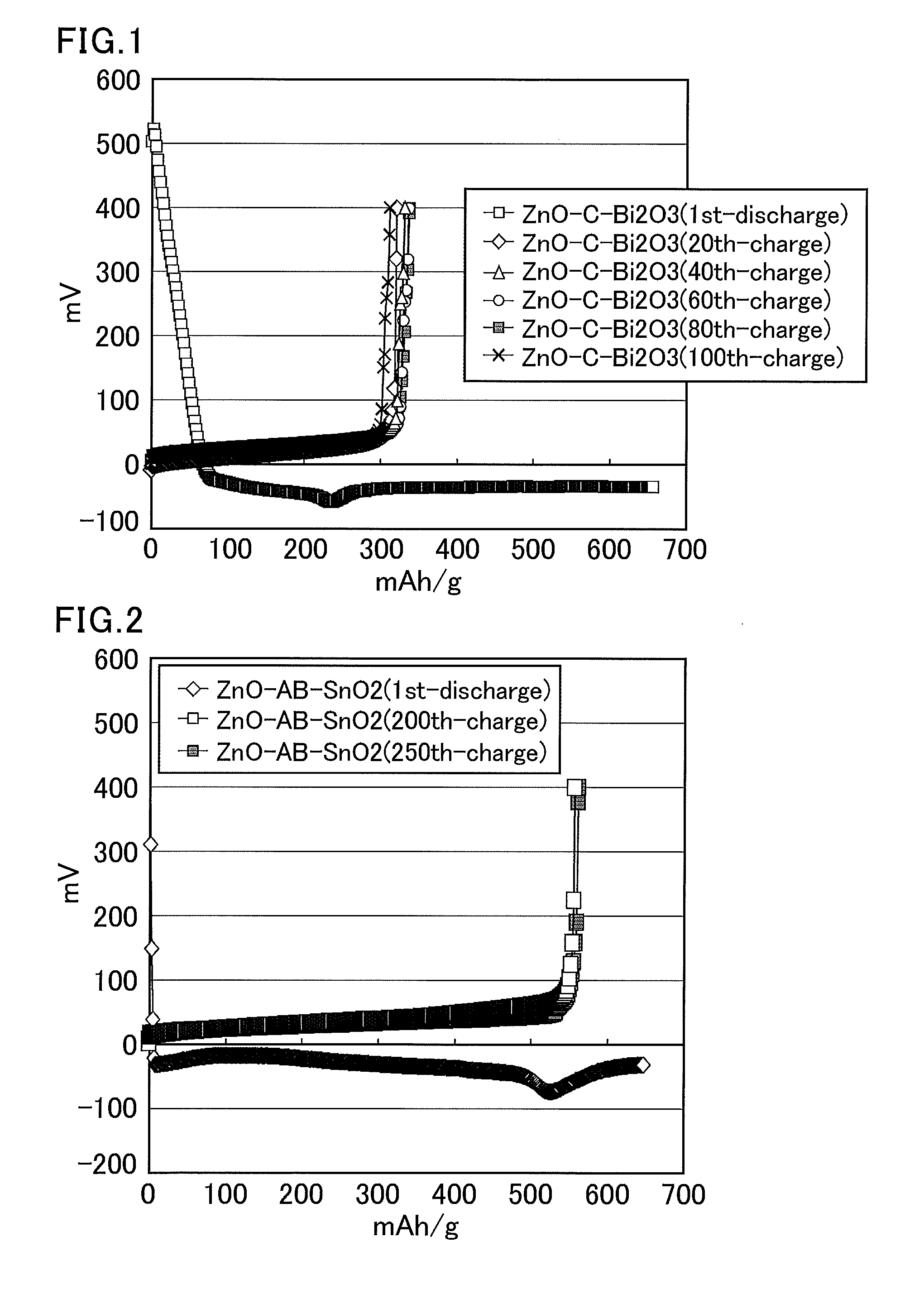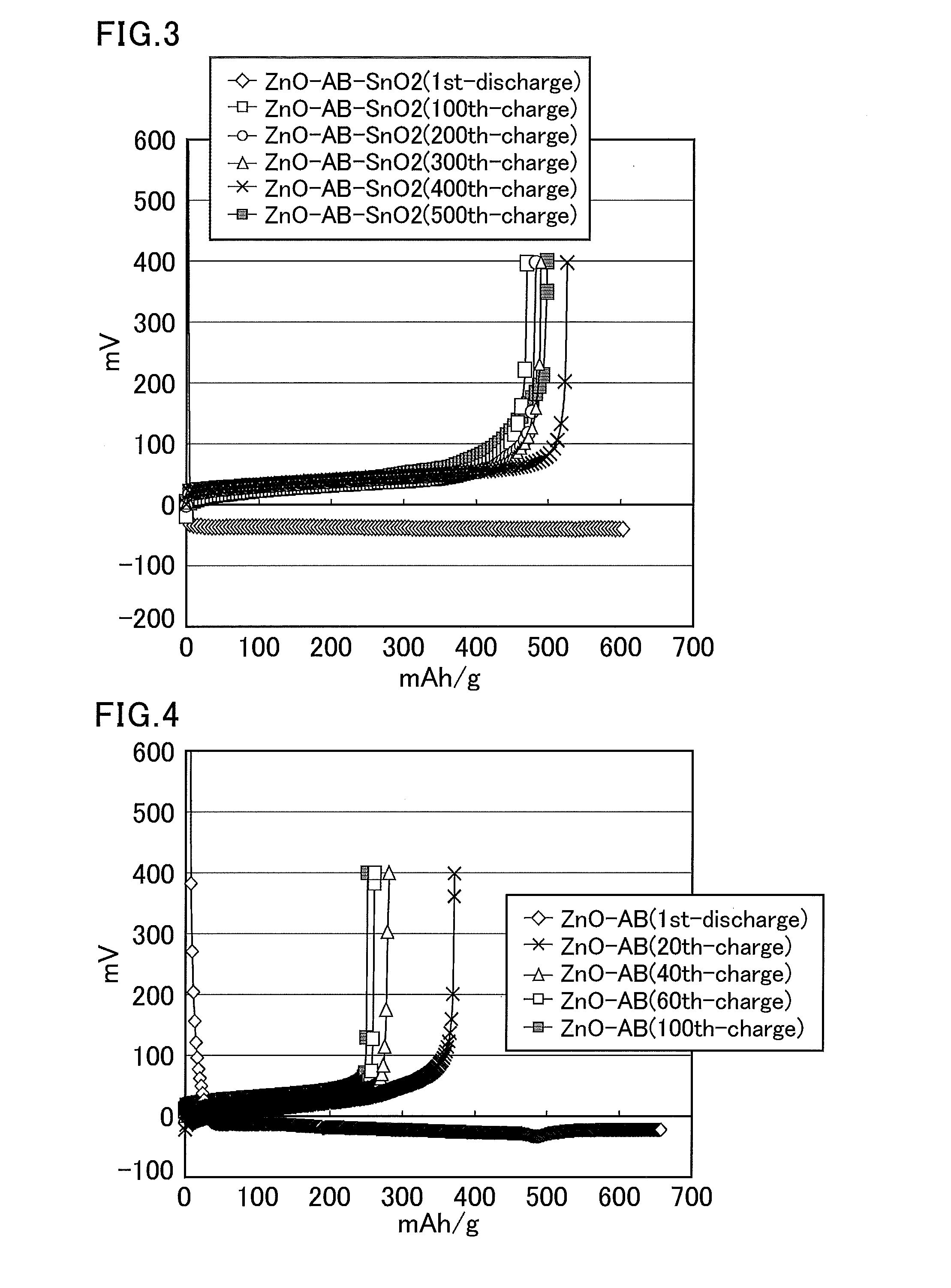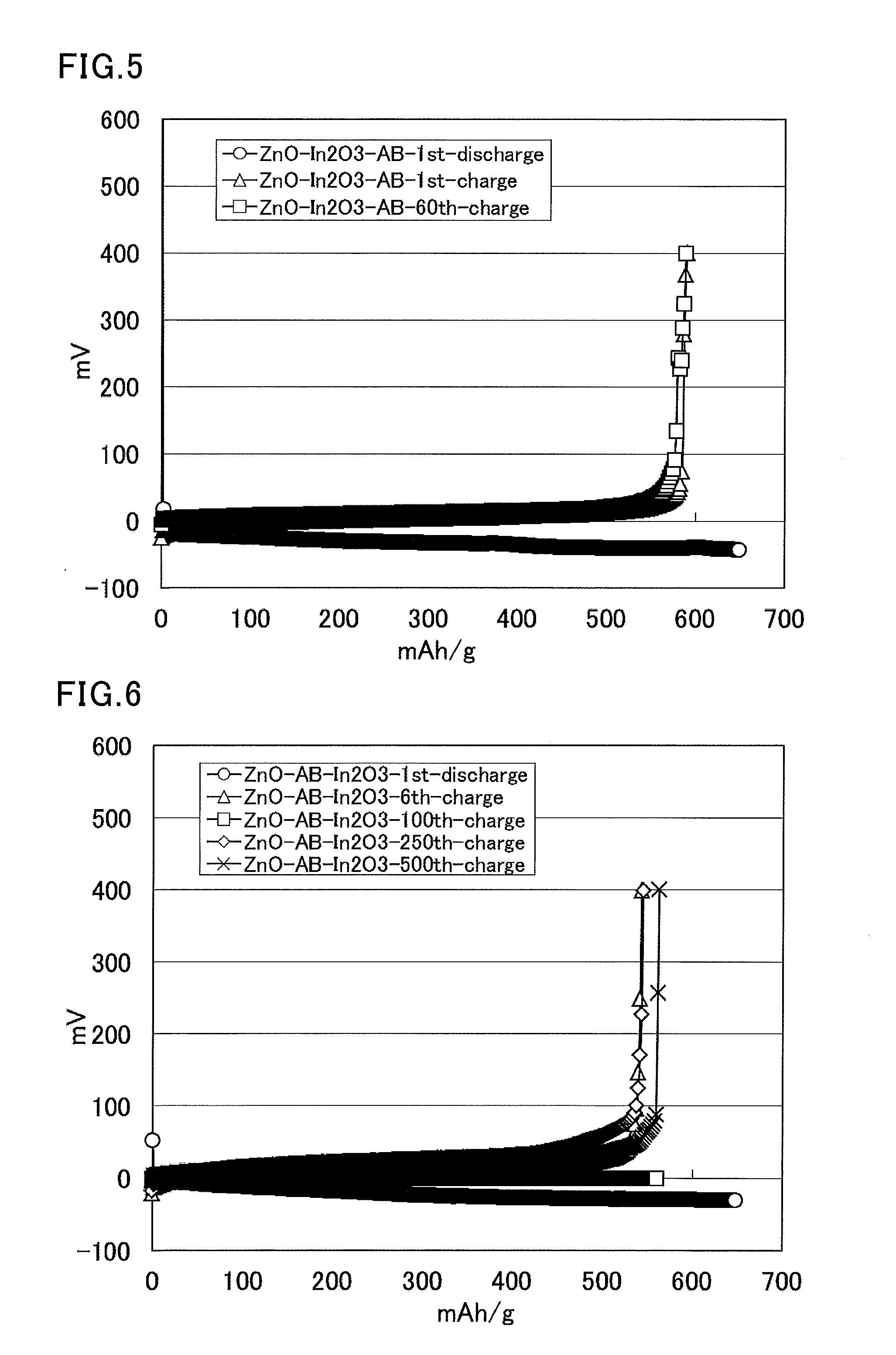Negative electrode mixture or gel electrolyte, and battery using said negative electrode mixture or said gel electrolyte
a technology of negative electrode mixture and gel electrolyte, which is applied in the direction of non-aqueous electrolyte cells, cell components, electrochemical generators, etc., can solve the problems of document failure to prove, rapid deterioration, and marked deterioration
- Summary
- Abstract
- Description
- Claims
- Application Information
AI Technical Summary
Benefits of technology
Problems solved by technology
Method used
Image
Examples
example 1
[0315]Zinc oxide (10.6 g, average particle size: 20 nm, specific surface area: about 20 m2 / g), vapor grown carbon fibers (multi-walled carbon nanotube) (0.35 g, aspect ratio (vertical / lateral): 100, specific surface area: about 10 m2 / g, average fiber length: about 15 μm), and bismuth oxide (0.87 g, average particle size: about 50 μm) were put into a bottle, and the mixture was pulverized using a zirconia ball in a ball mill for 12 hours. The obtained solid was passed through a sieve to provide an average particle size of 25 μm or smaller. This solid (1.3 g), a solution of 12% polyvinylidene fluoride in N-methylpyrrolidone (2.2 g), and N-methylpyrrolidone (1.0 g) were put into a glass vial and stirred overnight using a stirrer with a stir bar. The obtained slurry was applied to a copper foil using an automatic coating device, and then dried at 80° C. for 12 hours and dried in vacuo (at room temperature) for six hours. The copper foil coated with the zinc mixture was pressed at 1 t so...
example 2
[0316]Zinc oxide (10.5 g, average particle size: 20 nm, specific surface area: about 20 m2 / g), acetylene black (AB) (0.36 g, average particle size: about 40 nm, specific surface area: about 70 m2 / g), and tin oxide (0.87 g, average particle size: about 5 μm, specific surface area: about 5 m2 / g or smaller) were put into a bottle, and the mixture was pulverized using a zirconia ball in a ball mill for 12 hours. The obtained solid was passed through a sieve to provide an average particle size of 25 μm or smaller. This solid (1.29 g), a solution of 12% polyvinylidene fluoride in N-methylpyrrolidone (2.17 g), and N-methylpyrrolidone (1.2 g) were put into a glass vial and stirred overnight using a stirrer with a stir bar. The obtained slurry was applied to a copper foil using an automatic coating device, and then dried at 80° C. for 12 hours and dried in vacuo (at room temperature) for six hours. The copper foil coated with the zinc mixture was pressed at 1 t so that the thickness of the z...
example 3
[0317]A zinc mixture electrode was produced through the same steps as in Example 2. This zinc mixture electrode was used as a working electrode (zinc mixture weight: 2.64 mg) having an apparent area of 0.48 cm2. The counter electrode was a zinc plate, the reference electrode was a zinc wire, and the electrolyte solution was a saturated solution of zinc oxide in an aqueous solution of 4 mol / L potassium hydroxide (dissolved oxygen concentration: 5.2 mg / L). Then, a charge and discharge test was performed using the three-electrode cell at a current of 3.83 mA (charge and discharge times: 1 hour, cut off at −0.1 V and 0.4 V).
PUM
| Property | Measurement | Unit |
|---|---|---|
| particle size | aaaaa | aaaaa |
| size | aaaaa | aaaaa |
| diameter | aaaaa | aaaaa |
Abstract
Description
Claims
Application Information
 Login to View More
Login to View More - R&D
- Intellectual Property
- Life Sciences
- Materials
- Tech Scout
- Unparalleled Data Quality
- Higher Quality Content
- 60% Fewer Hallucinations
Browse by: Latest US Patents, China's latest patents, Technical Efficacy Thesaurus, Application Domain, Technology Topic, Popular Technical Reports.
© 2025 PatSnap. All rights reserved.Legal|Privacy policy|Modern Slavery Act Transparency Statement|Sitemap|About US| Contact US: help@patsnap.com



